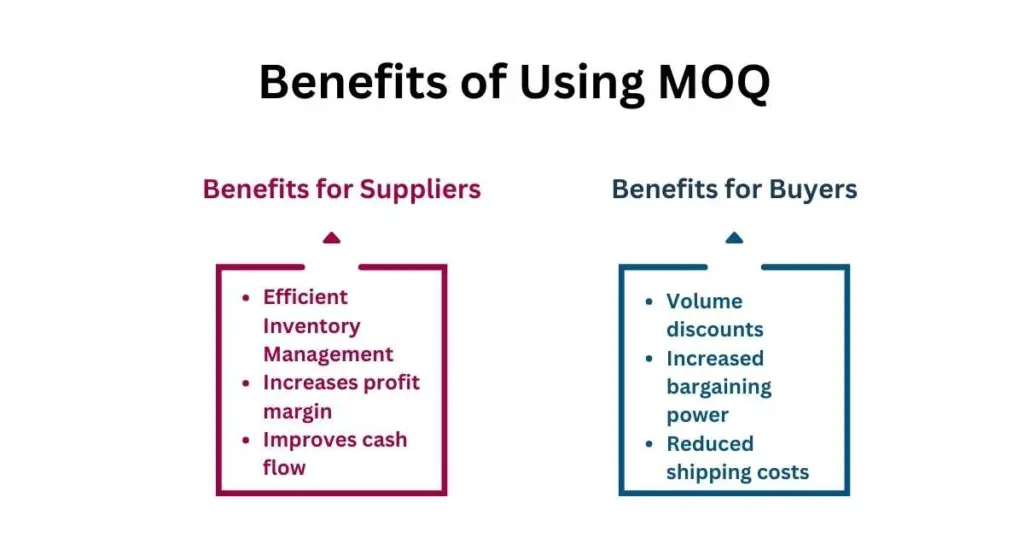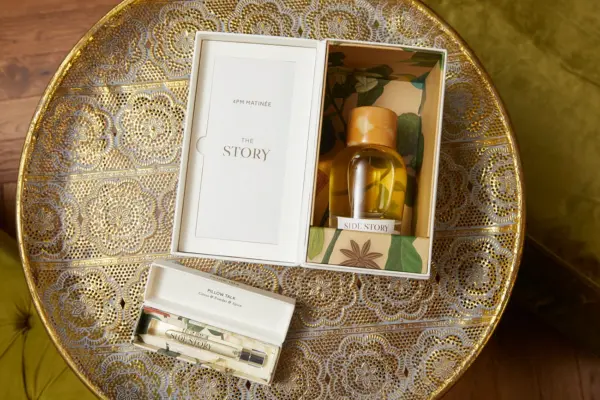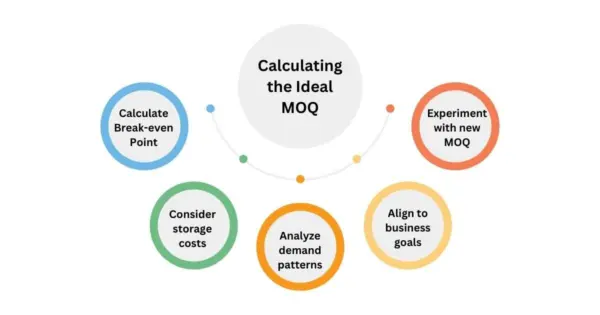The world of indie perfume brands is a vibrant tapestry of creativity, self-expression, and passion. Yet, behind the artistry lies a set of business realities—none more challenging than navigating Minimum Order Quantities (MOQs). For startup perfumers, MOQs present a fundamental puzzle: how to control budgets while delivering customized, distinctive products that stand out in a crowded market.
This blog unpacks the mechanics, challenges, and opportunities hidden within MOQs for indie fragrance makers. You’ll discover why they exist, how they impact everything from cash flow to creativity, and what strategies can help you turn them from a barrier into a business advantage. With practical tools, insider tips, and real-world examples, you’ll be equipped to grow your brand sustainably—without sacrificing your artistic vision or financial stability.

Understanding Minimum Order Quantities
Minimum Order Quantity (MOQ) is the smallest number of units a supplier—or manufacturer—is willing to produce or sell in a single run. MOQs are set for various components and finished products: fragrance oils, bottles, sprayers, packaging, and even labels. Suppliers use MOQs to ensure production is cost-effective and to avoid logistical inefficiencies. For the indie perfumer, negotiating MOQs is a critical part of the supply chain process.
Types of MOQs in Perfume Manufacturing
In perfume production, MOQs don’t come as a single figure—they exist at multiple stages of the supply chain. Understanding each type is the first step toward managing them effectively.
•Fragrance Oils
Suppliers of fragrance concentrates often set minimum batch sizes per scent, ranging anywhere from 1 kg to 25 kg or more. The MOQ is influenced by factors like raw material sourcing, blending labor, and storage stability. For an indie brand, committing to 25 kg of a single scent can mean thousands of bottles’ worth of fragrance—an expensive bet unless you’re confident in demand.
•Glass Bottles and Atomizers
Packaging is often the largest upfront investment. Glass bottle and atomizer suppliers typically require 1,000 to 10,000 units, with the lower end applying to stock designs and the higher end to intricate or custom molds. The complexity of decoration—frosting, color coatings, or embossing—can also push MOQs higher due to specialized production runs.
•Custom Printed Boxes and Labels
Specialized or branded packaging comes with higher thresholds because of tooling, plate-making, and printing setup costs. Even a simple foil-stamped logo on a box might require thousands of units to justify production time and materials. Labels, while generally more flexible, can still have MOQs if using specialty finishes or shapes.
•Finished Product Assembly
If you work with a contract manufacturer for filling and assembly, expect MOQs per SKU, often starting at 500+ finished units. This is to optimize their production lines and ensure labor efficiency. Smaller runs are sometimes possible but may come with setup surcharges.
Why MOQs Matter for Indie Brands
MOQs are more than just a number—they shape your entire business strategy.
On one hand, they can be a hurdle, tying up valuable working capital in unsold inventory and limiting your ability to experiment with multiple SKUs. High MOQs also mean higher storage costs and the risk of sitting on outdated stock if market trends shift.
On the other hand, MOQs unlock benefits. They enable lower per-unit costs, improved supplier relationships, and operational efficiencies that boost margins as you grow. When approached strategically, meeting the right MOQ can position your brand for better scalability and more competitive pricing in the market.

Challenges for Indie Perfume Brands
Limited Budgets and Cash Flow Risks
Small brands often work with tight capital constraints, making every purchasing decision critical. High MOQs demand larger upfront investments in packaging, ingredients, or finished products. If demand projections miss the mark, unsold stock can tie up funds—threatening day-to-day liquidity and limiting your ability to reinvest in marketing, development, or new launches.
Customization Needs
Uniqueness is the lifeblood of indie perfumery. Custom bottle shapes, decorative finishes, or bespoke scent blends can set your brand apart, but they typically come with higher MOQs due to specialized tooling and production runs. For a small label, this can mean choosing between creative differentiation and cost feasibility.
Supply Chain Constraints
Many glassmakers, fragrance blenders, and box printers operate on global or large-scale production models. Their inflexible MOQs—often designed for established brands—can make it difficult for indie makers to start small, test new ideas, or pivot without taking on disproportionate financial risk.
Demand Forecasting in Niche Markets
Indie perfume markets are often passionate but narrow in scale. Predicting sales volumes accurately is challenging when trends, seasonality, and scent preferences can shift quickly. Over-ordering risks expensive overstock and waste; under-ordering risks stockouts and lost sales momentum.
Core MOQ Strategies
Supplier Selection and Negotiation
Choosing the right supplier is foundational. There are several routes to explore:
- Contract manufacturers: Offer turnkey production solutions, sometimes with higher MOQs but flexible customization.
- Private label: Pre-made formulas under your brand, typically with lower MOQs.
- Artisanal partners: Local labs or small batch specialists can enable lower MOQs but may limit scale and pricing.
Negotiation Tactics
Start small, offer growth: Pitch your business as a long-term partner, requesting a lower initial MOQ with a commitment to reorder upon success.
Request mixed SKUs: Encourage suppliers to aggregate different bottle colors or scents within a single MOQ.
Build relationships: Suppliers may relax MOQs for brands they trust and communicate with transparently.

Leveraging Stock Components
Using readily available components is a classic workaround to strict MOQs.
- Standard bottles, sprayers, and caps: Stock packaging can be ordered in low quantities and customized economically with labels, ribbons, or simple finishes.
- Common fragrance bases: Many suppliers stock popular scent bases with industry-standard MOQs—ideal for a first launch or limited edition.
- Sourcing trade-offs: While stock components offer lower cost and risk, they may look less distinctive—consider semi-custom overlays or branded boxes to elevate the experience.
Group Purchasing and Collaboration
Pooling resources brings community and bargaining power.
- Forming co-ops: Indie brands unite to jointly purchase packaging or raw materials, meeting higher MOQs and accessing bulk discounts.
- Shared logistics: Collaborators can split shipping and warehousing costs, optimizing operational efficiency.
- Partnership pitfalls: Align expectations on quality, design, and delivery timelines to avoid conflicts.
Pre-Order and Crowdfunding Models
Reduce risk by selling before you build.
- Kickstarter, Indiegogo, pre-sales: Engage your audience upfront, securing cash to fund MOQ commitments.
- Benefits: Validates demand, improves cash flow, and generates buzz.
- Execution tips: Set clear expectations, transparent delivery timelines, and regular updates to build trust.
Small Batch Production Techniques
There’s strength in artisanal scale.
- Hand-filling and micro-batches: Local processing labs or even in-house filling allow for ultra-low MOQs and maximum creative freedom.
- Small batch suppliers: Seek out partners that specialize in indie scale, with flexible run sizes and expert guidance.
- Case studies: Brands like Imaginary Authors or St. Claire Scents showcase the viability—and charm—of small batch launches.
Customization vs. Standardization
Creativity doesn’t always mean custom everything.
- Modular customization: Standard bottle shapes with removable overlays, interchangeable caps, or customizable labels can deliver uniqueness without high MOQs.
- Minimalist or refillable packaging: Embracing simplicity cuts costs and improves sustainability.
- Balance: Understand where custom details add true value versus where group purchasing or semi-custom options suffice.
Building Supplier Relationships
Strong supplier ties pay dividends over time.
- Communicate transparently: Share your brand story, growth plans, and commitment to quality—suppliers are more likely to bend MOQs for serious partners.
- Loyalty programs: As your brand grows, negotiate volume discounts or exclusive designs.
- Feedback and accountability: Consistent, quality-focused partnerships garner trust and flexibility.

Case Studies: Indie Perfume Brands in Action
Success Stories
Elixir Attar
Elixir Attar harnessed the power of community engagement through crowdfunding to launch its first collection. Instead of opting for costly custom packaging, Elixir Attar chose to use high-quality stock bottles, which kept its minimum order quantities (MOQs) low and startup costs manageable. By pitching their authentic vision and use of rare ingredients, they successfully generated enough support via their crowdfunding campaign—not just securing the necessary funds to produce their debut scents, but also building an enthusiastic customer base before the bottles hit the market. This lean approach allowed Elixir Attar to minimize production risk and validate market demand while maintaining strong brand storytelling.
Side Story
Side Story is an artisan perfumery known for its sustainable practices and collaborative network. Rather than shoulder the burden of high MOQs for custom caps and luxury marble lids alone, Side Story partnered with other local makers and artisans. Through this collective approach, they were able to pool orders, split the costs of premium packaging components, and achieve a level of presentation typically reserved for much larger brands. This cooperation not only gave Side Story access to bespoke packaging at a manageable scale, but it also strengthened the local creative economy and allowed the brand to focus investment on ingredient quality and artisan productio
Lessons from Struggles
Papillon Artisan Perfumes
Papillon, a respected UK-based indie perfume house, faced a nearly business-ending challenge when early suppliers required large MOQs for raw materials—sometimes asking for a kilo or more even for expensive ingredients (at prices up to £19,000/kilo for things like orris concrete). Before convincing suppliers to accept smaller quantities, Papillon was at risk of tying up all their capital in inventory and struggling with long-term cash flow issues. This hard-won negotiation was essential to creating sustainable small-batch launches.
Luna Noel
Luna Noel, an indie natural perfume brand, leveraged Kickstarter to fund launches but initially underestimated the surge in demand during key holiday and gifting seasons. Orders briefly exceeded inventory, leading to out-of-stock issues at peak times and missed potential revenue. This highlighted the risk indie brands face if they don’t carefully forecast sales by season and build some extra inventory buffer for high-potential shopping windows.

Marketing Implications
Your Minimum Order Quantity (MOQ) strategy doesn’t just determine your production costs—it also directly shapes how your perfume brand looks, feels, and resonates in the market. From the way you launch products to the way you price them and tell your brand story, MOQ decisions influence customer perception and even your ability to build long-term loyalty.
Product Launches
Small Batch Releases – Creating Desire Through Exclusivity
Operating with lower MOQs allows you to produce limited runs, which can help you cultivate an air of mystique and exclusivity around your perfumes. Small batches encourage customers to purchase quickly for fear of missing out, and they give you the flexibility to introduce seasonal scents, experimental blends, or artist collaborations without the pressure of holding large amounts of stock.
Example: An indie brand producing only 150 bottles of a winter holiday edition can market it as “only here for the season—once it’s gone, it’s gone”, fueling urgency.
Ready-to-Scale – Testing and Iterating Quickly
Lower MOQ agreements also mean you can test a fragrance in a limited run, gather customer feedback, and iterate quickly for the next release. This is particularly useful for indie perfumers trying to hone in on customer favorites before committing to larger production runs.
Example: Testing a 200-bottle batch over a month before deciding whether to produce 2,000 bottles for a wider launch.
Pricing Strategies
Cost-Plus Pricing – Building from the Numbers Up
Knowing your exact per-unit cost at different MOQ levels enables you to set prices that ensure sustainability and profitability. Small quantities often have higher per-unit costs, so factoring this into your retail price is essential to avoid squeezing profit margins. Use transparent, data-based calculations so any premium pricing feels justified and sustainable.
Scarcity and Exclusivity as a Value Driver
MOQ constraints can actually be turned into a marketing advantage. Customers often associate limited production with rarity and craftsmanship. By framing lower MOQs as “intentionally limited” rather than “restricted by budget”, you can position your brand in a premium light.
Example: Marketing a batch as “Limited to 300 numbered bottles, each hand-filled and signed” creates a collectible appeal.
Storytelling and Brand Identity
Transparency – Turning Production Decisions into Brand Assets
Modern consumers appreciate honesty, especially from artisanal and indie brands. Sharing your small-batch production story—including how your MOQ choices allow for fresher ingredients, local sourcing, or more attention to detail—can deepen customer respect and loyalty.
Example: Explaining that a winter blend was made in only one micro-batch because the natural vanilla tincture used was available in limited quantity.
Community Building – Making Customers Part of the Journey
Crowdfunding and pre-orders do more than just help you meet MOQ targets; they create a sense of community ownership. Inviting customers to back a scent early, help name it, or choose from design mockups fosters a deeper connection and increases engagement.
Example: Offering Kickstarter backers early-bird pricing on your first 100 bottles not only funds production but also turns initial purchasers into brand advocates.

Regulatory and Quality Considerations
Navigating the world of perfume manufacturing isn’t just about creativity—it also means working within a strict framework of regulations and maintaining unwavering quality standards. Overlooking these parameters can spell trouble for brands of any size, from costly recalls to halted sales and reputational damage. Below, we break down the essentials every indie perfume brand should have in place.
Compliance
IFRA (International Fragrance Association):
The IFRA sets globally recognized standards on which fragrance ingredients can be safely used and at what concentrations. IFRA’s guidelines are essential for all perfume brands—especially those selling internationally—to ensure that formulas do not include banned or restricted materials. Membership is not mandatory but adhering to IFRA standards is widely seen as a mark of responsible, safe perfume making.
FDA (U.S. Food & Drug Administration):
For brands selling in the United States, the FDA oversees issues such as product labeling, marketing claims, and facility cleanliness for cosmetic products, which include perfumes. Key requirements include:
Ingredients must be listed clearly on the packaging.
No false or misleading marketing claims.
Manufacturing must follow current Good Manufacturing Practice (cGMP).
EU Regulations (Including REACH and Cosmetics Directives):
Selling in Europe brings additional requirements:
The REACH regulation restricts certain chemicals and mandates registration for some substances.
The EU Cosmetics Regulation requires safety assessments, establishment of a Responsible Person in the EU, and notifications to the Cosmetic Products Notification Portal (CPNP).
Mandatory Product Information Files (PIFs) must be maintained for each product.
Allergens present above certain thresholds must be declared on packaging.
Ensuring Quality
Batch Traceability:
Detailed records should be kept for every batch produced, including dates, raw material sources, and filling records. This allows a brand to swiftly manage recalls or answer quality concerns. Good traceability underpins both compliance and customer trust.
Material Documentation:
Keep up-to-date Safety Data Sheets (SDS) for every ingredient or raw material used, as well as Certificates of Analysis (COA) when available. These documents are essential for compliance, shipping dangerous goods, and answering customer or regulatory questions.
Product Testing:
Invest in:
Stability Testing: Ensures the perfume remains effective and safe over time, maintains color, fragrance, and consistency.
Allergen Testing: Especially important for formulations with botanicals or natural ingredients.
Microbial Testing: Confirms that the product is free from bacteria and contaminants before market release.
Why This Matters for Indie Perfume Brands
Legal protection: Proper compliance can save a brand from lawsuits, regulatory fines, or product bans.
Market access: Many retailers and online platforms require proof of regulatory compliance before stocking new brands.
Customer confidence: Demonstrating rigorous quality and compliance helps build a reputation for safety and professionalism—key for indie brands competing with bigger names.

Future Trends in Perfume MOQ Management
The world of fragrance entrepreneurship is entering an exciting era—one where rapid technological evolution, consumer values, and creative supply chain solutions are making MOQ challenges less daunting for indie brands. Here’s what’s on the horizon:
Flexible Manufacturing Solutions
Small-Scale Filling Technologies
New tabletop bottling machines, compact semi-automated filling lines, and “pay-per-run” shared microfactories are revolutionizing indie production. Brands can now produce high-quality, laboratory-grade batches for as few as 100 bottles without investing in expensive custom lines or meeting previously steep manufacturer MOQs.
Example: There are contract labs in Europe and the US specializing in runs as low as 50–300 units, offering artisanal and flexible solutions for indie launches and test batches.
Cloud-Based Supply Chain Platforms
Digital platforms are enabling perfume brands to collaborate with global suppliers more efficiently. Sophisticated software provides real-time visibility into stock levels, lead times, and even aggregates orders across brands to help everyone reach MOQs more easily. Algorithms for demand forecasting, automated reorders, and bulk sharing with other microscale producers are taking the risk out of inventory “guesstimating.”
Example: Platforms like Makersites.io or cloud-based ERP systems now help small brands manage supplier relationships, order statuses, and logistics even without a dedicated operations team.
Sustainability Movements
Eco-Friendly Packaging and Materials
The push for sustainability is creating new opportunities—and added flexibility—for small-batch production. Suppliers are now offering recycled, compostable, or lightweight packaging at smaller MOQs, making it feasible for indie brands to align with eco-conscious values from day one. A growing market for refillable bottles and reduce-reuse-return packaging programs further supports lower minimums and a greener profile.
Refill Programs
Forward-thinking indie brands and suppliers are piloting in-store or mail-back refill programs, slashing the need for single-use packaging and lowering MOQs. For example, a brand might only need to order a few hundred refill canisters at a time, versus thousands of full glass bottles.
Direct-to-Consumer Innovations
On-Demand Blending and Personalization
Emerging tech now allows customers to design and order custom fragrances online, blended just-in-time—removing the traditional MOQ barrier entirely. Automated micro-batching equipment and AI-driven scent recommendation engines could bring this to scale, letting brands offer personalized products without holding inventory.
Data-Driven Launches
Digital marketing, pre-orders, waitlists, and social listening enable brands to accurately gauge demand before committing production resources. By using data analytics and pre-order campaigns, indie perfumers can optimize batch sizes, reducing waste and aligning MOQs with real customer interest.

Conclusion
Indie perfume brands traverse a landscape where artistry dances with business realities—none more pressing than managing Minimum Order Quantities (MOQs). Success lies in blending creative expression with operational strategy, and nowhere is this clearer than in decisions around packaging and supplier partnerships.
By leveraging a wide array of strategies—like negotiating with suppliers, collaborative purchasing, crowdfunding, producing in small batches, modular customization, and astute budgeting—indie perfumers can balance budget constraints with the pursuit of uniqueness. Creativity becomes not just a hallmark of scent, but of the entire brand approach.
Jarsking brings practical and clear ideas to independent brands at different stages:
- Public mold bottles, at an MOQ of 5,000 units, provide accessible, market-tested packaging ideal for launching new lines with minimal financial risk. These are perfect for indie brands seeking quick market entry, manageable inventory, and the flexibility to test ideas without massive commitments.
- Custom design models (private molds), with realistic MOQs starting from 10,000 units, open the door for brands to create signature presentations when they’re ready to scale or invest in premium, exclusive collections. Jarsking’s consultative process and global manufacturing capabilities make this leap both feasible and strategically sound.
This flexible approach—start with public molds to minimize risk and scale smartly into custom models as demand grows—exemplifies how strategic supplier selection supports long-term growth and creative independence. Jarsking’s extensive portfolio of mold options, expert collaboration, and scalable solutions empower indie brands to align MOQ decisions with their evolving vision and business needs.
Ultimately, thriving as an indie perfume brand requires more than inspired formulas. It means embracing MOQ constraints as frameworks for focused design, intentional storytelling, and adaptive scaling. With the right strategies—and the right partners—you can transform MOQ realities from obstacles into stepping stones, letting your brand story, and your fragrances, truly shine.
